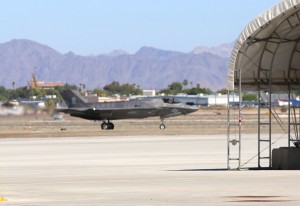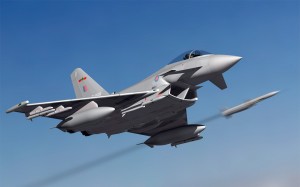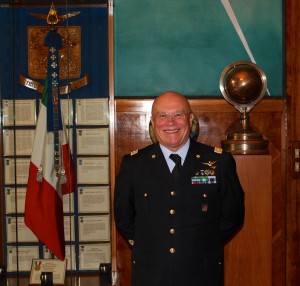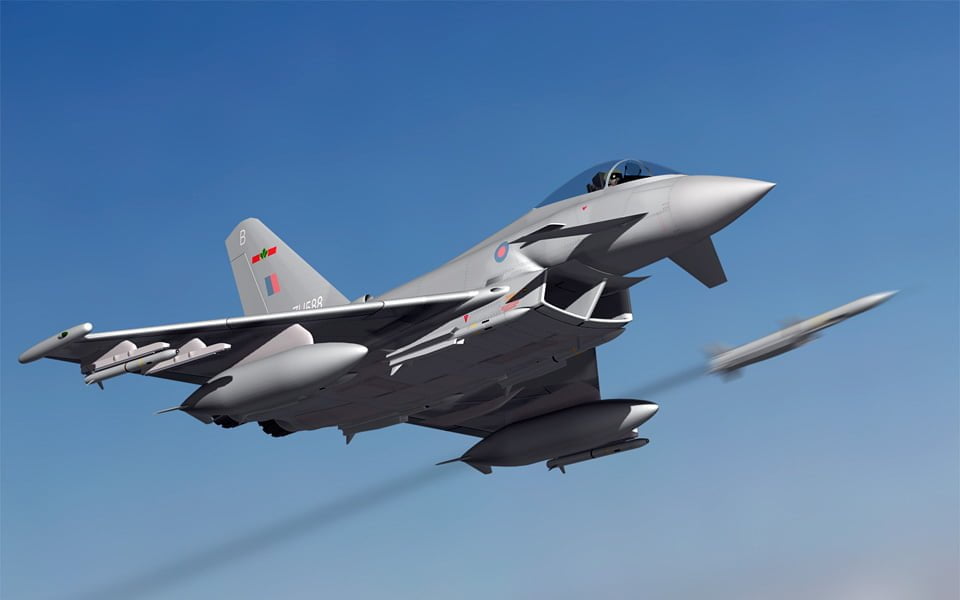2014-08-04 Some years ago, the former head of the F-35 program and then director of the USAF Air Armaments Center at Eglin Air Force Base, General “CR” Davis highlighted the importance of new weaponry. In this case he focused on a legacy weapon, the AMRAAM.
Maj. Gen. Charles Davis, director of the USAF Air Armaments Center (AAC) at Eglin Air Force Base, Fla., stated “it’s clear that we’ve rung about all we can out of the warhead and the seeker and the motor on the AMRAAM, so we’ve got to look at what’s the new generation of motors and warheads and seekers,” Davis said, “we’ve clearly got to get better range; we’ve got to get more powerful warheads.”[1]
Indeed visits to Eglin have reinforced the clear challenge of getting on with weapons modernization. Eglin has done wonders in ringing out capabilities from legacy weapons. But clearly it makes little sense to put “third and fourth” generation weapons on “fifth generation” aircraft, to quote the longest serving Chief Scientist of the USAF, Dr. Mark Lewis.
https://sldinfo.com/eglin-air-force-base-building-synergy-for-the-future/
The F-35 understood not as a plane, but as a global enterprise provides significant ways to innovate in the global weapons enterprise.
For allies, shaping new weapons for the F-35 provides a significant global opportunity for exports, and evolving capabilities.
For the United States, it provides a significant opportunity to take advantage of allied investments and to focus its own investments in those areas which allied global markets are not likely to focus upon. The F-35 has been designed to deliver integrated combat power, not interoperable air systems.
Integration of allied and American weapons takes advantage of the inherent integration in a fleet of common combat aircraft, built integrated from the ground up.
It is about maximizing global investment.
It is also about plugging in a diversity of global experiences into a much more capable fleet of aircraft.
Each country will shape its integration of the F-35 with its national forces a bit differently and in so doing may well seek weapons, which fit its corerequirements. With a global approach, subsets of countries could buy similar weapons to deal with convergent con-ops requirements.
Synergy arising from 4th and 5th Generation Aircraft Integration
The F-35 as a global force provides a force functioning with airpower along the lines of what we have called the “renorming of airpower.” What this means is that the F-35 plays a pull function on the entire legacy airfleet, and as such the question becomes how to most effectively manage the transition from 4th to 5th generation aircraft and how can the 4th generation aircraft be most effectively utilized by a 5th generation enabled air combat force?
Part of that answer is being shaped today at MAWTS-1, the premier USMC tactics and training facility located at the Yuma MCAS. The current working relationship between the F-35 and the F-18s at Yuma is done by secure radio transmission but as the F-35 fleet becomes enabled with the new data transfer system known as MADL, the opportunity to find ways to link MADL to 4th generation aircraft, perhaps through variants of the BACN system, will emerge.
It should be noted that the MADL transition is already starting as test pilots at Lockheed Martin are flying 4-ship F-35 formations with MADL inside to shape a way ahead with the scope and range of what a fleet of 360 degree enabled aircraft can bring to the battlespace. MADL is part of what makes the F-35 an integrated not an interoperable combat fleet.

According to MAWTS officers, progress is already underway with regard to thinking about synergy between 4th and 5th generation aircraft.
In the Fall of 2013, 121 participated in three WTI events and in the last course during the Spring of 2014, 121 participated in six events. To date the F-35Bs in the WTI events have performed SCAR (strike coordination and reconnaissance), escort and area defense missions.
The current planes are operating with Block 2A software and the Block 2B software arrives later this year for the preparation for the IOC in 2015. What this means is that the plane operating today with MAWTS is more limited than what will come later in the year. While Block 2B is largely a software upgrade, there are some planned hardware mods as well.
The F-35 is operating with other Marine Corps air as the blue team against red aggressors in various exercises.
This means that already the Marines are working the question of 5th generation aircraft working with 4th generation to shape tactics and training for more effective air operations.
This has meant as well that the combat systems on the F-35 have already demonstrated an ability to enhance the impact of F-18s and Harriers on air combat operations.
As one of the MAWTS instructors put it:
We are able to employ the F-35 as a kind of information manger using its combat systems to be able to employ the air ordinance carried by the other airplanes which allows us to conserve our ordinance on the F-35 until we actually need to use it.
This has already led to interesting results when doing things like the defense of Yuma exercise where the F-18s were enabled to do things they can not normally do against incoming USAF aircraft as the Red Force.
In this WTI event – Anti-Air Warfare 2 – the F-35 participated with 4th generation fighters from MAWTS against a Red Force, which included F-15s and F-16s. Because of the F-35’s combat systems, the participating 4th generation fighters were significantly more effective. Right now, the F-35 can be used to generate sensor data, which enhances the capability of the 4th generation fleet, limited by the current need to pass that data via voice means; and the F-35s ability to operate more freely in the battlespace than can 4th generation aircraft.
The Air Combat Command is working hard on how to integrate 4th with 5th generation aircraft, and clearly one aspect of that is how to maximize the use of fleet strike capabilities, and how to shape investments in new weapons going forward.
How the ACC addresses these issues and how the USMC and USN find solution sets will have a significant impact on allied forces as well; but so will allied solutions benefit the entire F-35 global enterprise as well.
The Weapons Modernization Opportunity
What makes the F-35 such a rupture from the past is not just the technology within the aircraft or the impact of the fleet, but that the US is standing up its F-35s at the same time as core allies. The potential for cross-fertilization, cross-learning and benefiting from each others investments in weaponization is significant.
A good example of the potential cross benefit involves the impact of the Meteor missile upon those European forces operating both Eurofighter and F-35. With Meteor enabled for Eurofighter and F-35A/Bs, the opportunity for joint stockpiling, joint development and common training for a missile, which can be used on both platforms, is significant.
The Meteor is a software upgradeable air-to-air missile with significant range and capabilities which solves the challenges suggested by General CR Davis mentioned earlier. And being integrated on several 4th generation aircraft – Eurofighter, Rafale and Gripen – as well as the F-35 provides it a solid operational base from which to shape an effective modernization strategy going forward. It is the synergy from the 4th Gen and 5th Gen mix which has yet to be fully grasped but is being trailed by the MAWTS.

Software upgradeability is a game changer for 21st century systems not well understood or highlighted by analysts. In the past, new products would be developed to replace older ones in a progressive but linear dynamic. But now, one builds a core product with software upgradeability built in, and as operational experience is gained, the code is rewritten to shape new capabilities over time. Eventually, one runs out of processor power and BUS performance and needs to consider a new product, but with software upgradeability, the time when one needs to do this is moved significantly forward in time.
It also allows more rapid response to evolving threats. As threats evolve, re-programming the missiles can shape new capabilities, in this case the Meteor missile. The current production missile is believed to be using well below the maximum processing power and bus capacity of the missile. Significant upgradeability is built in from the beginning.
Although software upgradeability is not new with regard to weapon systems, the F-35 as a software upgradeability is.
Combining the launch of a software upgradeable aircraft with a missile designed from the ground up with upgradeability built in will allow the aircraft and the weapon to evolve together over time to deal with evolving threats and challenges.
And underlying the model and the code is a multinational team. And this team is the core capability, which can drive weapons development over time. MBDA has functioned as the prime and has worked with three aircraft manufacturers and radar manufacturers already and is working with additional players as the missile prepares to go onto the F-35.
What has been a challenge – working with 6 air forces – is an opportunity as well. Each of the partners had different takes on the target set they wished the missile to serve. This has meant that the range of targets and engagement envelopes were very wide ranging, from low-level cruise missiles and high flyers, to UAVS, to helos, etc. The end result is a software upgradeable missile with a very wide-ranging initial capability to deal with a diversity of targets
Another key aspect of the missile is it is designed from the beginning to be employed on and off-board. It can be fired by one aircraft and delivered to target by that aircraft or the inflight data link can be used via another asset – air or ground based – to guide it to target.
The missile ought to be integrated into the Block 4 of F-35.
When so done, the missile can provide a sweet spot of 4th and 5th generation weapons integration with its core networking capability.
Because of the nature of software integration on the F-35, the Meteor missile, which will be integrated onto the F-35 due to European requirements, means that it is available to all the other global partners of the F-35 as well.
The Italian Case
An example of synergy among the air combat systems can be seen with regard to the Italian Armed Forces with their future mixed fast-jet fleet of Eurofighters and F-35s.
Recently, the first build Tranche 3 Eurofighter emerged from an Italian factory.
The first new standard Eurofighter Typhoon built in Italy has rolled out from the Turin-Caselle Plant. The latest Alenia Aermacchi production Eurofighter Typhoon, known as Tranche 3, represents a major achievement in the evolution of the world’s leading combat aircraft.
The Tranche 3 standard embodies a number of changes that effectively enhance the aircraft’s performance and which allow for future upgrades making it more attractive to current and potential export customers.
The first Italian Tranche 3 has been produced for the Italian Air Force by the Eurofighter Partner Companies and assembled by Alenia Aermacchi.
Italy is transitioning as well to become an F-35 defined air power, and as such, the F-35 will operate as the core enabler for the Italian Air Force and Navy.

As Lieutenant General Preziosa, the head of the Italian Air Force, put it in an interview last Fall:
One way to think about the way ahead is to continue to use 4th generation aircraft in surging mass to more classic airpower situations. One would use the F-35 as the key asset up against the distributed operational settings or for operations in denied air space.
Another way to look at it will be to find ways to gain more synergy between the F-35 and the legacy fleet. How can we better utilize our older assets during the process where the F-35 fleet becomes a reality?
Shaping combinations of 4th generation with the F-35s will be a mix and match opportunity in tailoring airpower to the missions ahead.
This is a challenge; but it is a key task within which the F-35s will make the legacy aircraft more effective; and the 4th generation aircraft will add support and strike capabilities to an F-35 enabled air power force.”
Working through how Eurofighters will work with F-35s is an important operational challenge for the Italian forces, but clearly having a common weapon in the form of Meteor can provide cost savings and amortization of support and training costs as well.
And the F-35 will be able to find targets for the Eurofighter, much like the MAWTS F-35s are already doing for the F-18s.
This increases the survivability of both platforms, and gives increased utility and becomes a force-multiplier for Eurofighter in an air operation.
Italy is buying a mixed F-35B and F-35A fleet and it would make a great deal of sense for Italy to work with its partners in Alenia and MBDA to shape a common F-35 approach whereby Meteor can be used on both the A and the B.
Italy has invested significantly in Meteor development and currently manufactures the seeker near Naples. It is clear that cost savings can be obtained from pooling resources for buying, stockpiling and maintaining a common weapons capability for the F-35A, F-35B and Eurofighter.
A key element of any rethink about the future of 21st century airpower is clearly working coalition investments and experiences more effectively in building out common capabilities and shaping greater interoperability for operations. The F-35 provides a unique integrated air combat capability whereby coalitions of joint or allied F-35s can be supported in common.
And linking F-35s with evolving overall joint and coalition combat force will be a key opportunity as well.
For Italy and the UK, as both F-35B operators, and Meteor partners, there is a clear opportunity to leverage joint experience and investments as well.
The UK is in a similar position with Italy (Eurofighter and F-35B operators), there is a natural partnership between the two in shaping a common policy with regard to Meteor integration on the F-35 and the residual ability to leverage the advantages from commonality.
Furthermore, this gives both the UK and Italy an increased operational edge and grants both nations a significant capability for coalition operations which could be leverage to enhance their political influence in those coalition operations.
UK and Italian leadership on Meteor would also draw together other JSF users interested in this capability. It is a case of each country’s natural alliances reinforcing the others.
There are also broader industrial benefits worth considering as well. It is clear that the global F-35 enterprise draws upon a global supply chain; what is not fully realized is that next generation weaponization can both benefit from the F-35 global enterprise and empower legacy aircraft at the same time.
With regard to Italy, Meteor’s integration both F-35 and Eurofighter offers the opportunity to improve the overall Italian industrial return across the F-35 program and reinforces the investment plan for the Final Assembly and Check Out (FACO) facility; expanding the FACO’s role to include the weapon aspects of sustainment is fully in keeping with the vision for a Regional Support Center as clearly articulated by the Italian Government.
In short, developing new weapons for combat aircraft is clearly a core necessity moving forward.
There are clearly major advantages to working commonality across the airfleet, and ensuring that the F-35 is the enabler for the overall weapons enterprise.
The Eurofighter and F-35 may not be the same generation aircraft, but they can share in the benefits of a next generation missile like the Meteor.
[1] Defense News 23rd March 2010
Also the latest news on Storm Shadow integration on the Eurofighter:
https://sldinfo.com/italian-eurofighter-progresses-on-storm-shadow-integration/


